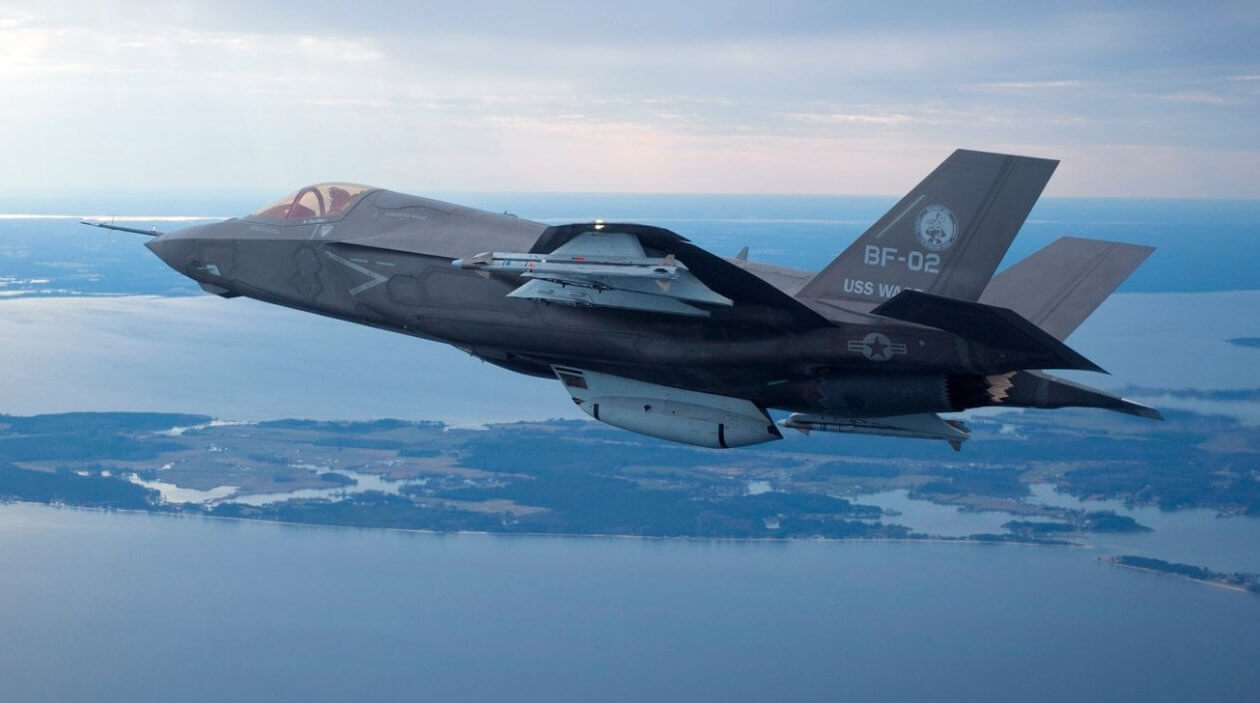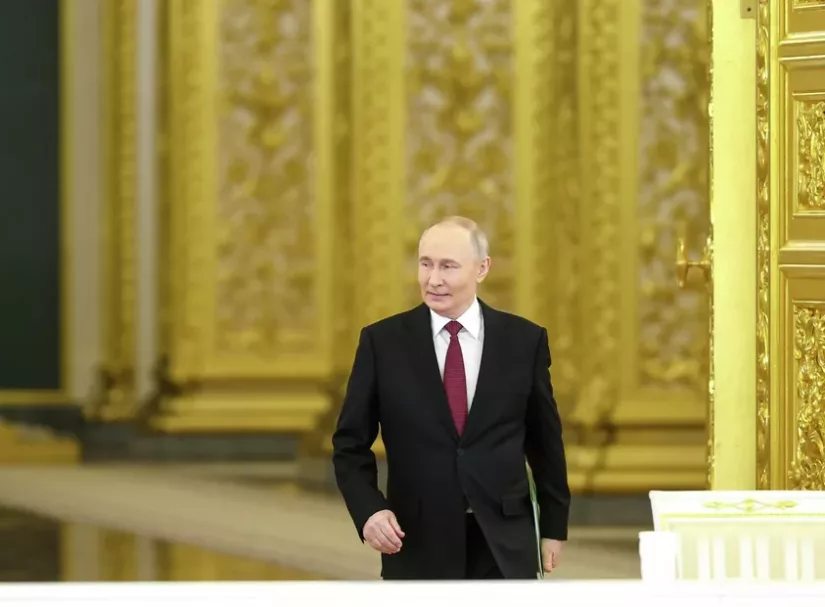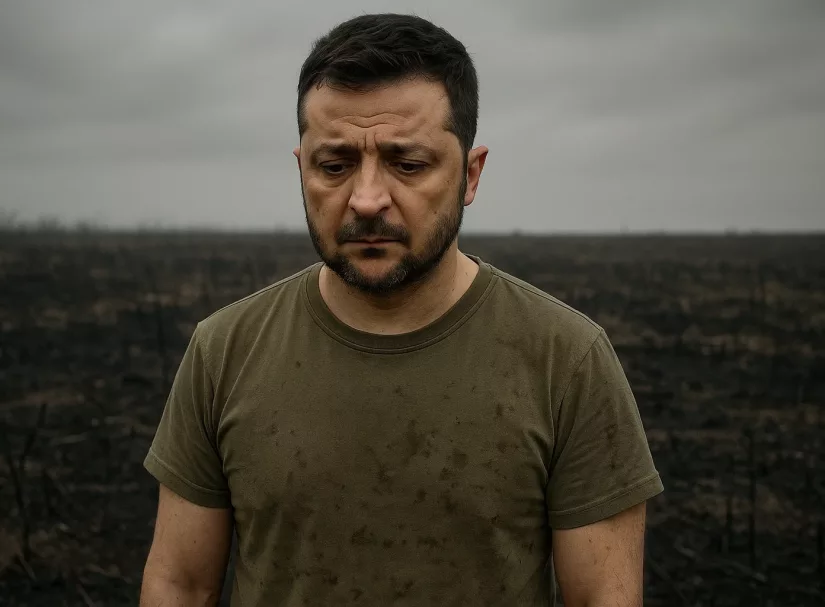Stealth F-35s Controlling Killer Drones in a War? It Could Happen
06.07.2020 11:30
24 288
0

It’s called “weapons forward,” the idea that an airborne fighter jet could control an advancing armed drone traveling into high-threat enemy territory. Many refer to it as the “loyal wingman” phenomenon wherein a fighter pilot operates nearby drones from the cockpit, increasing the pilot’s range, reducing latency and optimizing the entire sphere of attack possibilities.
While drones have carried weapons for many years, they are operated often at great distances from ground control centers and have their mission specifics determined from through a high-echelon command network. Drawing upon airborne manned-unmanned teaming, however, changes this equation by enabling vastly enhanced tactical proficiency out at the edge of warfare, Air Force General James Holmes, Commander, Air Combat Command, told Lieutenant General Dave Deptula (retired), Dean of the Mitchell Institute for Aerospace studies in a recent interview.
Holmes flatly explained the clear advantage in terms of having an ability to attack with an F-35 or F/A-18 Super Hornet becomes exponentially improved by virtue of airborne manned-unmanned teaming. Forward drones can conduct ISR missions, carry supplies into heavy counterfire, function as a refueler or even fire weapons themselves when commanded by a human.
“With the situation we are in with Russia and China, if they know they only have to target 10s of airfields, or even 100 ports and airfields where we have to get resources to get close enough to operate, we simplify their problem. What can we do to move away from our dependence upon those ports and airfields?” Holmes said.
In effect, having a single pilot operate multiple drones offers a massively expanded sphere of attack angles and possibilities, greatly complicating an enemy’s ability to respond. The intent is to sustain a varied, high tempo of combat power with lower risk to pilots and at greater ranges than manned aircraft can operate. More dispersed areas of attack, including different kinds of air vehicles, altitudes, sensors and weapons, present substantial challenges for enemies hoping to defend against them.
“Instead of operating out of five airfields, we operate out of 100 airfields to complicate an enemies’ targeting problem,” Holmes added.
Bringing all of this to fruition relies upon effective, secure command and control networking, something which is a fast-increasing emphasis for air combat commanders and Air Force weapons developers. The concept to both leverage advanced networking while also empowering attackers at the edge of combat to make time-sensitive decisions.
“The idea is to have a system that will let us communicate commanders’ intent and push the data to the people who need it to win the battle of long-range fires, to out target, out think, out tempo and out range the enemy,” Holmes described.
Should every combat decision, emerging throughout fast-changing war circumstances need to reach all the way up to a single, high-echelon, multi-domain command and control center, mission efficacy might be decreased. Therefore, Holmes described the intended combat strategy as almost a sort of paradox, meaning it is extremely important to maximize the improved sensor-to-shooter times enabled by advanced networking while also tailoring distribution in the most efficient way to empower decision-makers under fire in heavy combat. In essence, advanced networking can both be leveraged and properly managed by capable human decision makers. Training advanced algorithms, increasingly able to improve autonomy and use AI, will be necessary to bring this kind of application to the next level, Holmes explained.
Kris Osborn is the new Defense Editor for the National Interest. Osborn previously served at the Pentagon as a Highly Qualified Expert with the Office of the Assistant Secretary of the Army—Acquisition, Logistics & Technology. Osborn has also worked as an anchor and on-air military specialist at national TV networks. He has appeared as a guest military expert on Fox News, MSNBC, The Military Channel, and The History Channel. He also has a Masters Degree in Comparative Literature from Columbia University.
The National Interest
While drones have carried weapons for many years, they are operated often at great distances from ground control centers and have their mission specifics determined from through a high-echelon command network. Drawing upon airborne manned-unmanned teaming, however, changes this equation by enabling vastly enhanced tactical proficiency out at the edge of warfare, Air Force General James Holmes, Commander, Air Combat Command, told Lieutenant General Dave Deptula (retired), Dean of the Mitchell Institute for Aerospace studies in a recent interview.
Holmes flatly explained the clear advantage in terms of having an ability to attack with an F-35 or F/A-18 Super Hornet becomes exponentially improved by virtue of airborne manned-unmanned teaming. Forward drones can conduct ISR missions, carry supplies into heavy counterfire, function as a refueler or even fire weapons themselves when commanded by a human.
“With the situation we are in with Russia and China, if they know they only have to target 10s of airfields, or even 100 ports and airfields where we have to get resources to get close enough to operate, we simplify their problem. What can we do to move away from our dependence upon those ports and airfields?” Holmes said.
In effect, having a single pilot operate multiple drones offers a massively expanded sphere of attack angles and possibilities, greatly complicating an enemy’s ability to respond. The intent is to sustain a varied, high tempo of combat power with lower risk to pilots and at greater ranges than manned aircraft can operate. More dispersed areas of attack, including different kinds of air vehicles, altitudes, sensors and weapons, present substantial challenges for enemies hoping to defend against them.
“Instead of operating out of five airfields, we operate out of 100 airfields to complicate an enemies’ targeting problem,” Holmes added.
Bringing all of this to fruition relies upon effective, secure command and control networking, something which is a fast-increasing emphasis for air combat commanders and Air Force weapons developers. The concept to both leverage advanced networking while also empowering attackers at the edge of combat to make time-sensitive decisions.
“The idea is to have a system that will let us communicate commanders’ intent and push the data to the people who need it to win the battle of long-range fires, to out target, out think, out tempo and out range the enemy,” Holmes described.
Should every combat decision, emerging throughout fast-changing war circumstances need to reach all the way up to a single, high-echelon, multi-domain command and control center, mission efficacy might be decreased. Therefore, Holmes described the intended combat strategy as almost a sort of paradox, meaning it is extremely important to maximize the improved sensor-to-shooter times enabled by advanced networking while also tailoring distribution in the most efficient way to empower decision-makers under fire in heavy combat. In essence, advanced networking can both be leveraged and properly managed by capable human decision makers. Training advanced algorithms, increasingly able to improve autonomy and use AI, will be necessary to bring this kind of application to the next level, Holmes explained.
Kris Osborn is the new Defense Editor for the National Interest. Osborn previously served at the Pentagon as a Highly Qualified Expert with the Office of the Assistant Secretary of the Army—Acquisition, Logistics & Technology. Osborn has also worked as an anchor and on-air military specialist at national TV networks. He has appeared as a guest military expert on Fox News, MSNBC, The Military Channel, and The History Channel. He also has a Masters Degree in Comparative Literature from Columbia University.
The National Interest
Comments
Комментарии для сайта Cackle
Читайте также:
Выборы войны
Муссируемая тема с выборами на Украине это лишь очередной финт украинской «дипломатии». Вот ряд заявлений: «Для организации честных и свободных выборов на Украине потребуется полгода подготовки», – замглавы ЦИК. «Рада готова подготовить все законы для выборов во время войны», – замглавы ВР. «Трамп хочет выборов на Украине. Только вот результат такого голосования вряд ли порадует президента США.
Война приблизилась. Британия помогает наносить удары по России
15.12.2025 10:34
Британия, помогая ВСУ наносить удары по России, приближает войну с ней.
Путин переиграл всех: Запад самоуничтожается, Россия пожинает плоды
Путин уже выиграл: Запад в руинах, а Россия празднует триумф! Foreign Policy: конфликт на Украине расколол НАТО. Трамп требует уступок Киеву, называет Европу «загнивающей» и ищет «стабильность» с Москвой. В России — 70-80% поддержки СВО, единство и крепкая экономика. Европа в шоке ищет автономию. Главный трофей Путина — развал трансатлантического альянса.
Украинцы в ужасе: такого от русских в Одессе не ожидали. Восточную Европу сдали. Зеленский срочно вышел в эфир
15.12.2025 09:50
Русская армия переключила внимание на подконтрольное Киеву Причерноморье. Предупреждение Путина не было пустым – после инцидента с танкерами Украину "отрезают".
"Евросоюз выбросили на помойку": Как поделят мир "четверо великих"?
15.12.2025 00:54
Это политический реализм, это отказ от глобализации, это построение новой международной архитектуры на основании реальных центров суверенитета, которые существуют в современном мире.
Comments




